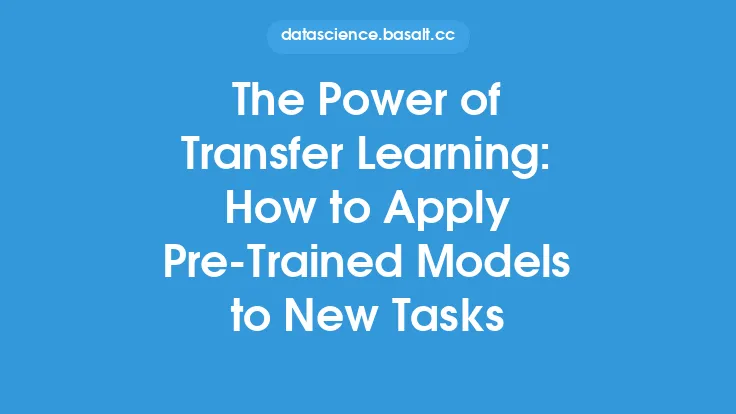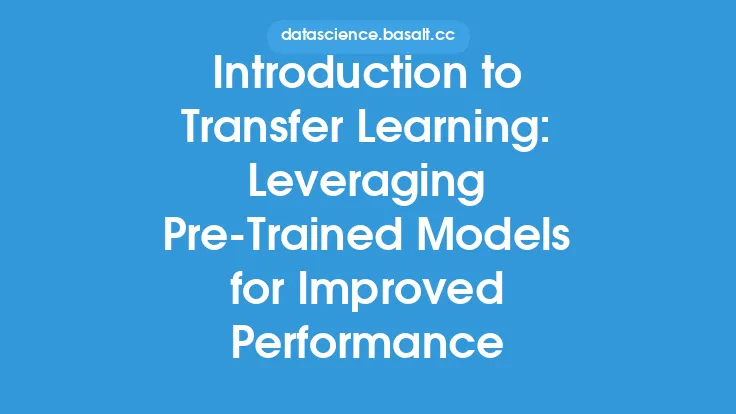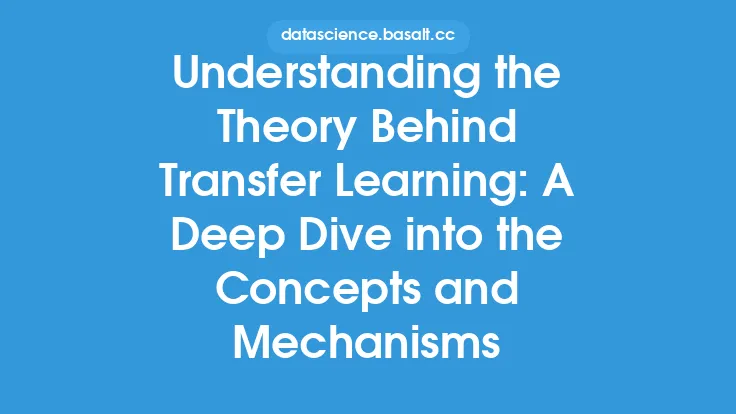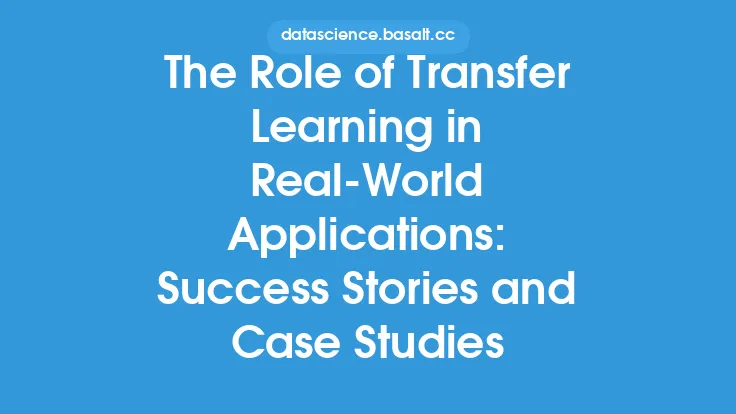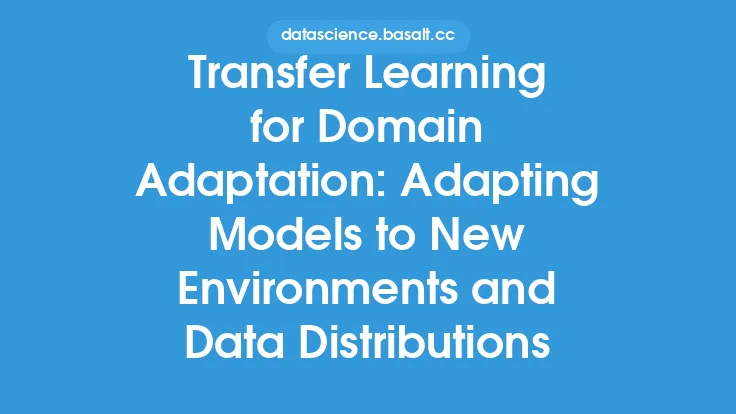The concept of transfer learning has revolutionized the field of machine learning, enabling developers to leverage pre-trained models to improve the performance of their own models. At its core, transfer learning is a technique that allows a model trained on one task to be applied to another related task, with the goal of reducing the amount of training data and time required to achieve good performance. In this article, we will delve into the benefits of transfer learning and explore why using pre-trained models is a crucial component of any successful machine learning strategy.
What is Transfer Learning?
Transfer learning is a machine learning technique that involves using a pre-trained model as a starting point for a new, but related, task. The pre-trained model has already learned to recognize certain features and patterns in the data, which can be applied to the new task with some fine-tuning. This approach is particularly useful when there is limited training data available for the new task, or when the new task is similar to the task the pre-trained model was trained on. By leveraging the knowledge and features learned by the pre-trained model, developers can create models that are more accurate and robust, with less training data and computational resources.
Benefits of Transfer Learning
The benefits of transfer learning are numerous and well-documented. Some of the most significant advantages of using pre-trained models include:
- Reduced training time: Transfer learning can significantly reduce the time it takes to train a model, as the pre-trained model has already learned to recognize certain features and patterns in the data.
- Improved model accuracy: By leveraging the knowledge and features learned by the pre-trained model, developers can create models that are more accurate and robust, even with limited training data.
- Smaller dataset requirements: Transfer learning can be used with smaller datasets, as the pre-trained model has already learned to recognize certain features and patterns in the data.
- Increased model interpretability: Pre-trained models can provide insights into the features and patterns that are most relevant to the task at hand, which can be useful for model interpretability and explainability.
- Reduced overfitting: Transfer learning can help reduce overfitting, as the pre-trained model has already learned to recognize certain features and patterns in the data, and is less likely to overfit to the new task.
How Transfer Learning Works
Transfer learning works by using a pre-trained model as a starting point for a new task. The pre-trained model is typically trained on a large dataset, such as ImageNet, and has learned to recognize certain features and patterns in the data. When a new task is introduced, the pre-trained model is fine-tuned on the new task, with the goal of adapting the model to the new task. This fine-tuning process typically involves adjusting the model's weights and biases to better fit the new task, while still leveraging the knowledge and features learned by the pre-trained model.
Types of Transfer Learning
There are several types of transfer learning, including:
- Feature extraction: This involves using a pre-trained model as a feature extractor, where the pre-trained model is used to extract features from the input data, and then a new model is trained on top of these features.
- Fine-tuning: This involves fine-tuning a pre-trained model on a new task, with the goal of adapting the model to the new task.
- Weight initialization: This involves using the weights of a pre-trained model as the initial weights for a new model, and then training the new model from scratch.
Real-World Applications of Transfer Learning
Transfer learning has a wide range of real-world applications, including:
- Computer vision: Transfer learning is widely used in computer vision tasks, such as image classification, object detection, and segmentation.
- Natural language processing: Transfer learning is used in natural language processing tasks, such as language modeling, text classification, and sentiment analysis.
- Speech recognition: Transfer learning is used in speech recognition tasks, such as speech-to-text and voice recognition.
Choosing the Right Pre-Trained Model
Choosing the right pre-trained model is crucial for successful transfer learning. Some factors to consider when choosing a pre-trained model include:
- Dataset similarity: The pre-trained model should have been trained on a dataset that is similar to the dataset for the new task.
- Task similarity: The pre-trained model should have been trained on a task that is similar to the new task.
- Model architecture: The pre-trained model should have a similar architecture to the model that will be used for the new task.
- Model size: The pre-trained model should be of a suitable size for the new task, with larger models typically requiring more computational resources.
Common Challenges and Limitations
While transfer learning has many benefits, there are also some common challenges and limitations to be aware of, including:
- Overfitting: Transfer learning can still result in overfitting, particularly if the pre-trained model is not well-suited to the new task.
- Underfitting: Transfer learning can also result in underfitting, particularly if the pre-trained model is too simple or has not been fine-tuned sufficiently.
- Domain shift: Transfer learning can be affected by domain shift, where the distribution of the data for the new task is different from the distribution of the data for the pre-trained model.
- Catastrophic forgetting: Transfer learning can be affected by catastrophic forgetting, where the model forgets the knowledge it learned from the pre-trained model during fine-tuning.
Best Practices for Transfer Learning
To get the most out of transfer learning, it's essential to follow best practices, including:
- Start with a pre-trained model: Use a pre-trained model as a starting point for the new task, rather than training a model from scratch.
- Fine-tune the model: Fine-tune the pre-trained model on the new task, rather than using it as a fixed feature extractor.
- Use a suitable optimizer: Use a suitable optimizer, such as Adam or SGD, to fine-tune the pre-trained model.
- Monitor performance: Monitor the performance of the model during fine-tuning, and adjust the hyperparameters as needed.
- Use regularization techniques: Use regularization techniques, such as dropout or weight decay, to prevent overfitting during fine-tuning.
